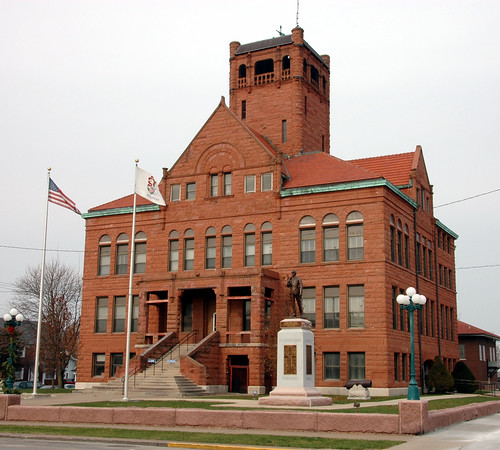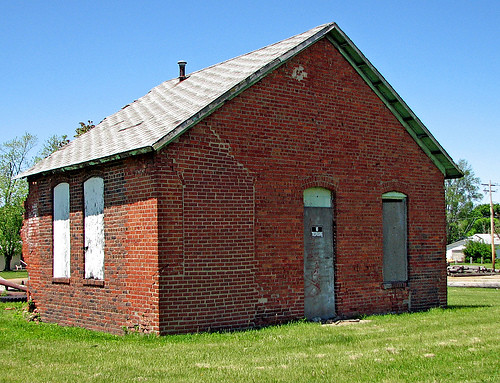
Warren County Courthouse
There isn’t much information about Lovey Mitchell’s life before or after his arrest. The case against him was tenuous to say the least. A former co-worker, John O. Knight, also black, who was already serving a prison sentence for burglary and larceny, was reportedly “confessing” that Mitchell was the murderer. His wife was brought into the fray as a witness and was put in jail in Peoria in order to “protect” her. Reports out of Peoria had Chief Morrison telling reporters Mitchell had confessed while the Monmouth paper was denying any such interviews even took place. By the end of the month it was clear either the newspapers were just making things up or someone “inside” was feeding the reporters phony information. Mitchell was denied a lawyer and not allowed to speak to reporters. While Morrison would not state whether he felt Mitchell was guilty of the Dawson’s murders, he did state he “did not believe [Mitchell] was guilty” of the other axe murders that had occurred. The editor of the Monmouth Review-Atlas in 1915, L. A. Ryan, didn’t believe Mitchell was guilty of anything. Newspapers reported that Mitchell would face a Grand Jury in April of 1915 but there isn’t any record of this trial officially or in newspapers. Mitchell’s arrest made national headlines but his trial or lack thereof didn’t even register in Chicago. The records of the Monmouth Review-Atlas appear to be incomplete as well. A 1984 revisiting of the incident gets some of the facts right but misses on others. It states John Knight was tried, convicted and sentenced for the crime, but Knight, an early suspect due to the proximity of the M&StL roundhouse to the crime scene, was given an alibi by his foreman. The article also states the murder weapon was an axe when it was actually a gas pipe. It appears any charges against Mitchell were dropped and he may have died in January of 1979 near East St. Louis, Illinois.


1 comment:
Lovey Mitchell was arrested twice for the Dawson murders, once in 1915 and again in 1918 when John Knight was tried and convicted of it. As they let Lovey go the second time they asked him what he planned to do. He said he was going back to St. Louis and get his old job back. And that if they wanted to arrest him for the crime again, they would know where to find him. Lovey was described as being a giant, stoop shouldered man. He died in December of 1918 of Spanish Flu when the epidemic hit St. Louis hard during the years 1918-1919. He's buried in Fernwood Cemetery. He was survived by his wive Mary.
Post a Comment